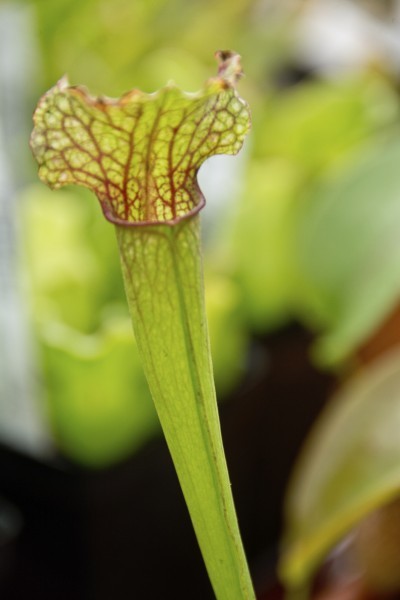
Some indoor plant enthusiasts think pitcher plants are easy to grow, while others believe the carnivorous plants are headaches waiting to happen. The truth is somewhere in the middle, and for the most part, pitcher plants are happy if you can meet their needs for water, light and humidity. If you’re having carnivorous plant problems, such as a pitcher plant not making pitchers, it may require some troubleshooting to determine the problem. Read on for helpful tips.
My Pitcher Plant Has No Pitchers!
How to get pitchers on pitcher plants? Be patient, as pitcher plants take time to develop the first pitcher. Oftentimes, if the plant looks healthy and the tendrils are developing, a little time is all it needs. You’ll probably notice pitchers before you know it!
How to Get Pitchers on Pitcher Plants
If your plant doesn’t seem to be thriving in addition to not developing pitchers, the following tips will help with fixing pitcher plant problems:
- Light – Most pitcher plant varieties need at least three to four hours of bright sunlight per day. Failure to produce pitchers is an indication that the plant isn’t receiving adequate light. However, although the light should be bright, it should be indirect and not too intense. If the leaves are turning yellow, the plant may be getting a little too much light. Experimentation will help you determine the right amount of light for your plant.
- Water and potting mix – Pitcher plants don’t appreciate the minerals and additives in tap water. If possible, give them only filtered or distilled water. Better yet, collect rainwater and use it to water your pitcher plant. Water the pitcher plant whenever the top of the potting mix feels dry. The potting mix should never be bone dry, nor should it be soggy or waterlogged. Use a well-drained, low-nutrient potting mix such as a mix consisting of half sphagnum moss and half perlite, vermiculite or lava rock.
- Humidity – Although requirements vary depending on the species, most types of pitcher plants prefer relatively high humidity; excessively dry air can cause the plant not to develop pitchers. Mist the plant regularly or increase the humidity in your home with a humidifier. An easy way to increase the humidity around the plant is to place the pot on a humidity tray. Just place a layer of pebbles on a tray, then set the pot on the pebbles. Add just enough water to keep the pebbles wet, but be sure the pot is sitting on the pebbles but not standing in water. The plant will rot if water seeps up through the drainage hole.
- Feeding – Pitcher plants require very little supplemental fertilizer, but they do benefit from a light feeding of an acidic fertilizer. Mix 1/8 teaspoon of acid fertilizer with 1 quart of water, or use a fertilizer formulated for orchids. Avoid over-feeding. Too much fertilizer can create a lush plant with no pitchers.






